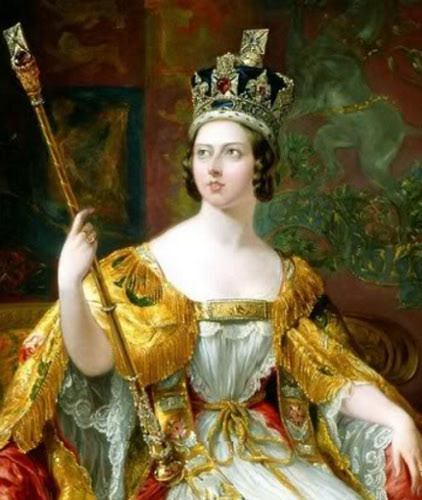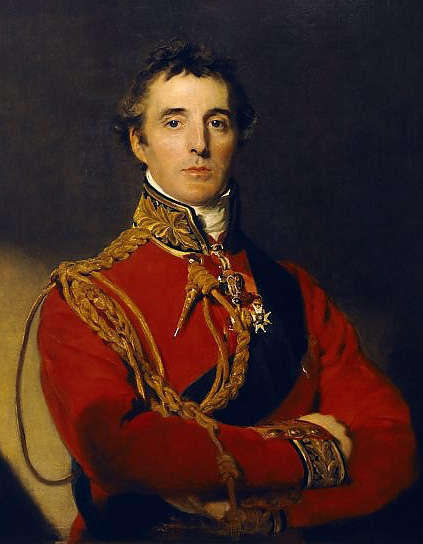We hope you enjoy the articles and short stories presented here, and will join Kate in her adventures for many years to come.
Upon request, you will receive an inscribed copy of Kate Tattersall Adventures in China with every donation of $10 or more plus shipping. Please use the Contact Page to provide your shipping address and we will reply with your total.
One of the most confusing aspects of reading anything written in the mid 1800s is the way titles, ranks, and names were used, and who took precedence in any situation. Siblings even addressed each other by title. In letters a person might be mentioned with a rank and last name, or a title and first name, or just one of either. To try and get an understanding I would recommend this website: Peerage Basics. Laura A. Wallace has done a great job setting it all out. I still don’t have it entirely straight, and believe there have been some changes over the years, but below is listed the precedence of the ranks as they would have existed during Queen Victoria’s reign, including considerations for a king.
First there was the Royalty. You will note that the Queen wouldn’t hold such a title if she had a brother, even if he was considerably younger or a step-brother from her father’s second or third marriage, so there are gaps in the ranks whenever the sovereign’s brothers are taken into consideration. (This precedence has recently been amended by Parliament, so the rule of male primogeniture has been removed and the eldest child will inherit the crown irrespective of sex.) The King’s/Queen’s daughters’ husbands aren’t included, because they were expected to be members of royal families from other nations.

Queen Victoria, by G. Hayter. She was an only child, so several of the ranks wouldn’t have applied during her reign
The King
The Queen
The Prince of Wales (eldest son, the heir apparent)
The Princess of Wales (the Prince of Wales wife)
Princes, younger sons of the King/Queen
Princesses
King’s brothers
King’s/Queen’s sisters
Princesses, wives of the King’s/Queen’s sons
Duchesses, wives of the King’s/Queen’s sons
King’s/Queen’s uncles
Wives of the King’s brothers
Wives of the King’s/Queen’s uncles
King’s/Queen’s grandsons
Wives of the eldest sons of Dukes of the Blood Royal
King’s brother’s sons
King’s/Queen’s sisters’ sons
Daughters of Dukes of the Blood Royal
Wives of the King’s brothers’ sons
Wives of the King’s/Queen’s sister’s sons
Then came a group of men with high appointments within the Church of England and the Royal Household. These individuals might hold their position for months or decades, depending on health, deaths, and political change.
Archbishop of Canterbury, Lord Primate of all England
Lord High Chancellor, or Lord Keeper
Archbishop of York, Primate of England
Lord High Treasurer
Lord President of the Privy Council
Lord Privy Seal
Lord High Constable
Earl Marshal
Lord High Admiral
Lord Steward of his Majesty’s Household
Lord Chamberlain of his Majesty’s Household
The peerage followed, with appointment holders mixed in. An eldest son held an honorary rank one below his father, but the eldest son’s wife did not receive a title until her husband inherited, or if the son received another title for service. So, for example, a duke’s eldest son would be known as a marquess, but his wife would not be a marchioness. However, she would still take precedence almost as high, and would be a duchess when her husband inherited. Daughters stood just below their eldest brother’s wife, but younger sons were bumped another rank lower. The peerage were also known as the nobility and aristocracy.

Sir Arthur Wellesley, 1st Duke of Wellington, by T. Lawrence. The son of an earl, he was technically demoted when knighted in 1804, then made a baron, then viscount, then an earl, then marquess, and finally a duke in 1813. Kate Tattersall also went through a bit of a demotion and promotion process, but despite winning laurels of honour for her service, her highest rank was simply for being the daughter of an earl.
Dukes, according to their patents
Duchesses
Marquesses, according to their patents
Marchionesses
Dukes’ eldest sons
Wives of the eldest sons of Dukes
Daughters of Dukes
Earls, according to their patents
Countesses
Marquesses’ eldest sons
Wives of the eldest sons of Marquesses
Daughters of Marquesses
Dukes’ younger sons
Wives of the youngest sons of Dukes
Viscounts, according to their patents
Viscountesses
Earls’ eldest sons
Wives of the eldest sons of Earls
Daughters of Earls
Marquesses’ younger sons
Wives of the younger sons of Marquesses
Bishops of London, Durham, Winchester, and all other Bishops, according to their Seniority of Consecration
Barons, according to their patents
Baronesses
Speaker of the House of Commons
Viscounts’ eldest sons
Wives of the eldest sons of Viscounts
Daughters of Viscounts
Earls’ younger sons
Wives of the younger sons of Earls
Barons’ eldest sons
Wives of the eldest sons of Barons
Daughters of Barons
Then came the gentry, with lesser nobility and appointment holders. It gets rather convoluted about halfway down.
Knights of the Garter
Maids of Honour
Privy Counsellors
Chancellor of the Exchequer
Chancellor of the Dutchy of Lancaster
Lord Chief Justice of the King’s Bench
Master of the Rolls
Lord Chief Justice of the Common Pleas
Lord Chief Baron of the Exchequer
Judges and Barons of the Degree of the Coife of the said Court according to Seniority
Viscounts’ younger sons
Wives of the younger sons of Viscounts
Barons’ younger sons
Wives of the younger sons of Barons
Baronets
Baronetesses (rare, where a Baronetcy may pass through the female line)
Wives of Baronets
Wives of the Knights of the Garter
Knights Grand Crosses of the Bath
Wives of the Knights Grand Crosses of the Bath
Knights Commanders of the Bath
Wives of the Knights Commanders of the Order of the Bath
Knights Bachelors
Wives of Knights Bachelors
Eldest sons of the younger sons of Peers
Wives of the eldest sons of the younger sons of Peers
Baronets’ eldest sons
Wives of the eldest sons of Baronets
Daughters of Baronets
Knights of the Garters’ eldest sons
Wives of the eldest sons of the Knights of the Garter
Daughters of Knights of the Garter
Knights Grand Crosses of the Bath’s eldest sons
Wives of the eldest sons of Knights Grand Crosses of the Bath
Knights’ eldest sons
Daughters of Knights of the Bath
Wives of the eldest sons of Knights Bachelors
Baronets’ younger sons
Wives of the younger sons of Baronets
Daughters of Knights Wives of Companions of the Order of the Bath
Companions of the Order of the Bath
Esquires of the King’s Body
Wives of Esquires of the King’s Body
Gentlemen of the Privy Chamber
Esquires of the Knights of the Bath
Wives of Esquires of the Knights of the Bath
Esquires by creation
Esquires by office
Wives of Esquires by creation
Wives of Esquires by office
Knights of the Garter younger sons
Wives of the younger sons of Knights of the Garter
Knights Grand Crosses of the Bath younger sons
Wives of the younger sons of Knights Grand Crosses of the Bath
Knights Bachelors younger sons
Wives of the younger sons of Knights Bachelors
Gentlemen entitled to bear arms
Wives of Gentlemen entitled to bear arms
Daughters of Esquires entitled to bear arms, who are gentlewomen by birth
Daughters of Gentlemen entitled to bear arms, who are gentlewomen by birth
Wives of Clergymen, Barristers at Law, Officers in the Navy and Army
Bannerets were also included during the 1800’s, but none were still alive. A banneret was an individual knighted on the field of battle by the sovereign. The last were created by George II after the Battle of Dettingen, 1743, during the War of the Austrian Succession.

matt
This is confusing, until you see the pattern. But when it gets into the knights’ families I’m lost.
Pat
This is helpful. I’m going to use this for reference. Thanks.
Rowland
Your site is like a one-stop shop for Victorian info. So easy to read and navigate. Thanks.
Meghan
Thanks for the marvellous posting! Your site is fantastic. All book series should have this.
E
Very good blog!
Kieran Hughes
Brilliantly detailed ‘summary’ – I teach teens about the aristocracy – this is an invaluable teaching aid – thank you !!!
Vincent Phantomhive
The Victorian Era classes are confusing, and you were not allowed to talk to someone of higher rank without them introducing themselves first.
Aminah
The Victorian Era is surely complicated…
R.S. Fleming
@ Vincent and Aminah; I hope my website articles makes the era easier to understand. The short stories I have been posting about Kate cover many facets of early Victorian society.
Joshua moolman
Wonderful, I love the Victorian era, certainly one of my most favorite times in history. Your blog certainly helped me a lot in my studies. Keep up the good work! And thank you again.
Kathryn
Thank you. This is confusing, but your article helped.
Denzil Lincoln
Does anyone know what the job title in 1861 was. Listed in the census of that year was Charles West of Hull MRC of England. I am at a loss?
R.S. Fleming
If you asking what the post nominal MRC stood for, it might be Member of the Royal College. Medical post nominals were different in the mid 1800s. Normally, it would be MRCS, for Member of the Royal College of Surgeons.
WM
Thank you very much for this info! I was wondering how we would formulate the title of a Viscount. Thank you again.